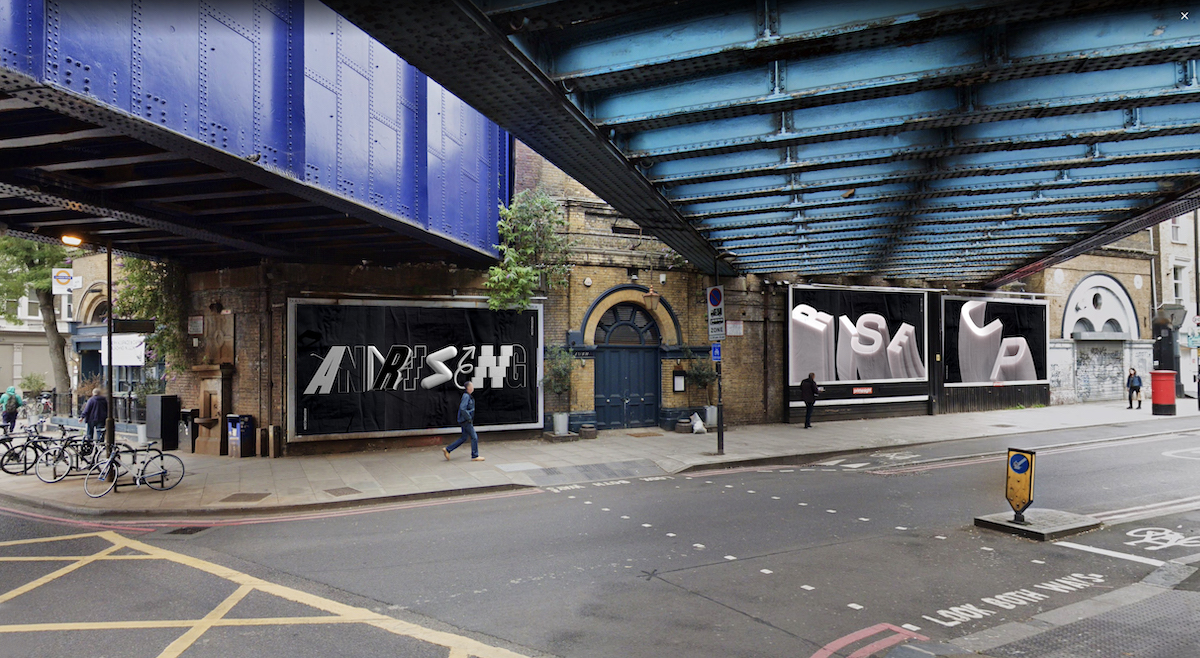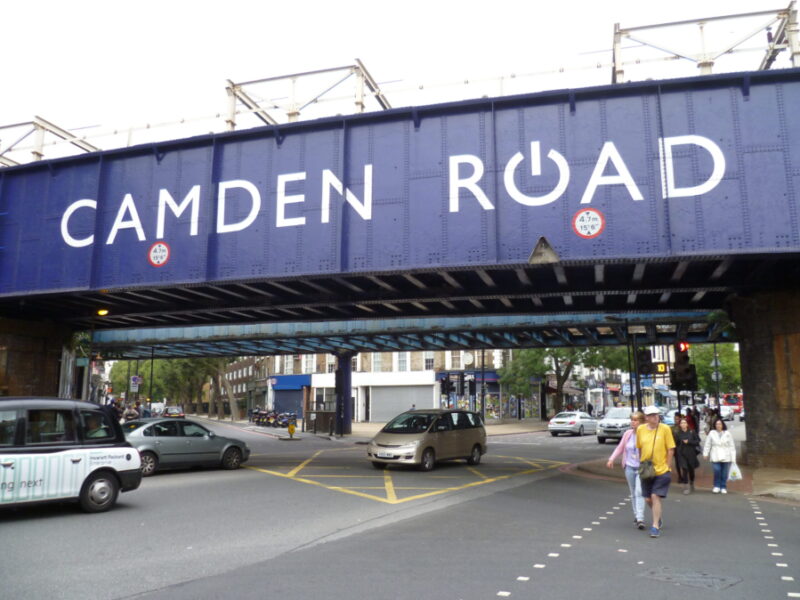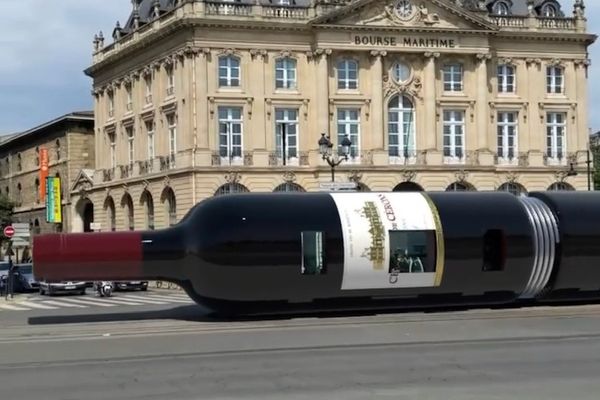
London Creative Shop Suggests Charity Donations To Pay For Fake OOH On Real Structures
August 21, 2023 by Dave Haynes
A London agency has an interesting notion for dealing with the rise of fake OOH or “faux dooh” ads – donate money to effectively “pay” for virtual use of ad spaces or built spaces made to look like they have ad campaign billboards or posters.
The CEO of Ad Rising suggests in a post on the UK ad industry site Campaign suggests that so many creatives have been virtually using a set of three posters outside its Camden Town offices – Photoshopping in ads over the existing posters – that they should kinda sorta pay rent for the privilege.
Writes Jonathan Trimble:
Every day we see people walking past these giant sites on Camden Road with eyes glued down to tiny screens, fingers stroking their phones. We don’t see the poster of Emma Raducanu winning the US Open in real life. We see her selfie in front of it on our phones: the post of the poster.
Following Mel Arrow’s (chief strategy officer at McCann London) article on fake out-of-home, others continued to announce wins and work with the now-infamous 49 Camden Road poster site. So we got to insisting that everyone owed us some rent. Past and future, one-off, anytime, every time, big or small. There’s a lot of rent to be collected.

We’d like payments to go directly to the Brixton Finishing School – our suggested contribution is £1,000. But why not be a baller and go for more? If it has to be smaller, that’s cool too. What’s it worth to you?
And everyone that’s used it so far is already a hero; share your great work. We’ve had people submit new work from Uber Eats, ITV, Amazon and Heineken, alongside prior campaigns from BrewDog and Durex, but the list goes on.
Do we have any right to charge rent? Of course not. It’s an honesty box. Social media can be brittle, and we don’t mean it to be when we post your work. You’re not being called out; you’re being called forward.
This is a modest, somewhat playful suggestion from someone in the business, but there’s a larger, arguably more serious issue at play – billboard spaces owned by media companies, building facades owned by commercial property firms and landmarks with a variety of owners that are being used as virtual billboards.
If you own a large billboard in a major city how do you feel if a brand and its agency develop a virtual campaign – run to generate social media shares – that uses that very expensive space for free?
The CMO of the big UK OOH media owner Ocean Outdoor suggests in a company blog post that marketers who are using computer-generated graphics to push out fake DOOH content online hints at having an issue with its boards – like Piccadilly Lights – being borrowed. But says more overtly that there is also a brand trust issue.
Cheerleaders will say it’s just a bit of entertaining fun to get a few shares. But, like real DOOH, it builds expectations. Okay, it might be cool, but I’d go back to my Asprey customer and say that faux is no replacement for the original. It’s misleading and people are being fooled. And people who feel fooled are pretty quick to vocalise their displeasure, question authenticity and lose trust in the brand.
Even more problematic, sections of the British press who trawl social channels for “stories” are being tricked into “reporting” these virtual stunts as if they are real. This in turn creates a PR issue for those responsible who didn’t make it clear from the start that it’s phoney or a mock up.
It’s reaching the point where we need to ask ourselves where do you drawn the line when “borrowing” legitimate commercial out of home mediums like Piccadilly Lights or indeed, trains, buses, underground stations.
Sure, it might be a cheap, easy tactic to build buzz, but how justifiable is it to PR fake activations on someone else’s commercial real estate if the people behind it aren’t transparent about what they are really doing?
I have to think in hyper-litigious countries like the United States, editing an image or video from an existing billboard or building site to make it look like there’s a flashy visual illusion ad on it will scramble lawyers and generate some cease and desist letters. Or lawsuits.
In theory, of course, AI tools like Midjourney could start to get around this by creating a DOOH environment that looks real, but isn’t. Or some enterprising creative could cook up something that maybe looks like Times Square, but isn’t any real place, and establish an ideal template that can be licensed and used by brands and their agencies to generate buzz through shares on TikTok, Instagram and other platforms.

The wild card in all this is the staying power of these fake/faux ads. I wonder if anamorphic illusion ad spots have the same stopping power and social buzz as they did when they first started popping up two or three years ago. And I wonder if people are growing a lot wiser and more skeptical about some of these CGI’d efforts that get circulated online, presenting crazy concepts like trams in cities shaped like wine bottles. Is some of the surprise and delight of seeing these things lost if viewers are instantly wondering how it was done or whether its real or not?



Leave a comment